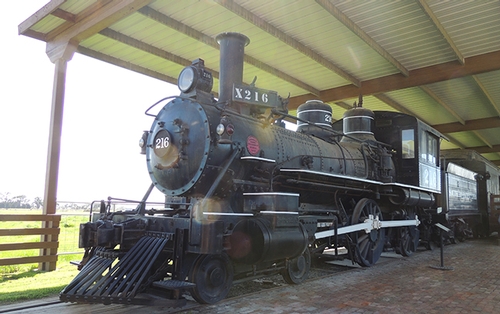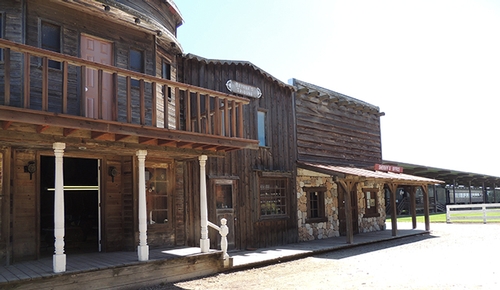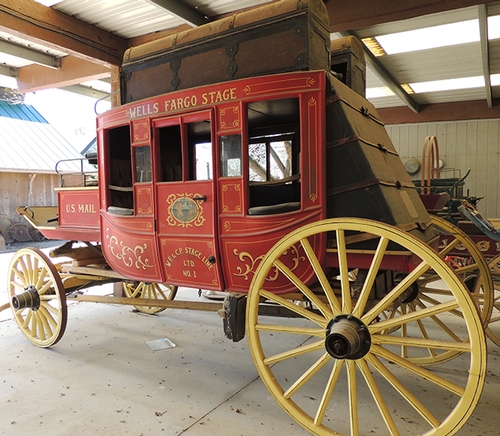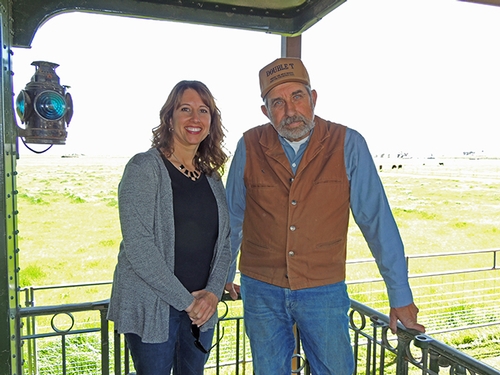
Posts Tagged: history
Family grows History Train Adventure from organic dairy roots
Tony Azevedo's father moved the family from Watsonville, where he operated a small dairy, to Stevenson in the heart of the San Joaquin Valley in 1958. Azevedo rented 15 acres of land that had become alkaline through irrigation with no drainage for many years. He put in drainage, worked the land and put it into pasture. Starting with this land and adding 10 or 15 acres at a time, Azevedo developed the 400 acre Double T Ranch as the first organic dairy in the San Joaquin Valley.
Tony Azevedo, with his wife Carol and other family members, kept the organic dairy operating for many years until consolidation and competition in the industry forced them to get out of the dairy business. Fortunately, Tony and Carol had also been growing another passion on the Double T Ranch: The Double T Agriculture Museum and the History Train.
The Double T Agricultural Museum was built as a tribute to all the farm families of the past who have fed Americans. The exhibits reflect the life and times of family farmers and industry from the 1800s to the 1950s. From lovingly restored horse-drawn vehicles and carriages to a full-size restored steam locomotive, the collection is host to many vintage treasures. School-children enjoy visiting the old west town and learning the story of how trains transported California crops throughout the country and brought new life to small towns. Brides can enjoy a ride in an elegant historic horse-drawn carriage before their wedding ceremony at the Double T Ranch venue.
This year, with daughter Arlean Azevedo joining the team, The Double T is inviting the public to enjoy a train journey like no other. Here is how Arlean describes the latest adventure:
"Climb aboard our Historical Dinner Train for an evening of fine dining and a chance to see how the steam locomotive changed agricultural history in the San Joaquin Valley. Your evening will begin with a cocktail hour and a tour of one of California's premier Agricultural Museums. At the sound of the train whistle we'll begin boarding for the two hour virtual reality experience that includes a fifteen minute documentary while enjoying appetizers, followed by dinner. The History Train will leave you with a deep appreciation of what travel was like 100 years ago. Your evening will conclude with dessert and a walk through the “Baggage Car” filled with rail history memorabilia, antiques and collectibles."
Although the next History Train Dinner Tour on May 17, 2019 is sold out, seats are still available for the Saturday June 1, 2019 voyage. Prices are $70 per person and include all beverages, dinner and dessert. Advance reservations and payment are required.
Learn more about the train and reserve your tickets here.
Will work for food
The Los Angeles Times today ran a compelling photo in its blog "Framework," which shares intriguing news images of the past, showing men collecting vegetables in payment for labor during the Great Depression. For information on such cooperatives, Framework directed readers to a blog post written by the director of UC Cooperative Extension in Los Angeles County, Rachel Surls, in June 2010.
Surls reported that many farmers were unable to harvest produce because they couldn’t afford labor, and enormous quantities of food were left in the fields as people went hungry. One response of Los Angeles County residents was to organize into “self-help cooperatives." Self-help cooperatives were based on bartering labor for goods, for example, harvesting farmer’s crops for a share of the harvest.
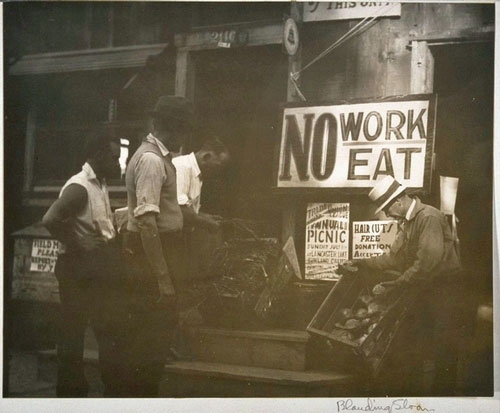
Cooperatives helped unemployed people who preferred to work rather than accept public assistance. (Photo: Bancroft Library, UC Berkeley)
UC the midwife in birth of California Farm Bureau
The California Farm Bureau Federation is marking its 90th anniversary next year with an article in the current issue of AgAlert that traces the organization's origins and provides historical anecdotes. In the article, UC Cooperative Extension gets credit for being the "midwife" when the statewide organization was born in 1919.
Extension was created by the federal government in 1914. Before academic staff would be assigned to a county, the service was required to establish a farm organization to channel information from advisors and specialists to farmers and their families.
A county Farm Bureau representing at least 20 percent of the farmers in the county had to be operating before a farm advisor could be appointed for the county, according to the AgAlert article, written by the publication's executive editor, Steve Adler.
The first California county to qualify was Humboldt, which formed its Farm Bureau in 1913. The following year, Yolo, San Joaquin and San Diego counties founded their Farm Bureaus.
The article quoted a 1917 circular written by the founder of California's Agricultural Extension Service, B.H. Crocheron. Crocheron envisioned the county Farm Bureau acting as "a sort of rural chamber of commerce and ... the guardian of rural affairs. It can take the lead in agitation for good roads, for better schools, and for cheaper methods of buying and selling."
"Perhaps the Farm Bureau can help to buy cheaper and better seeds, can help to boost the local socials, can encourage the faltering school teacher, can get out and talk for good roads--but its first and surest function is to increase the local knowledge of agricultural fact," Adler further quoted Crocheron.
In time it became clear that the Farm Bureau should pursue a broader agenda, according to the article.
"Because the university could not participate in those extra activities, organizers decided to separate the Farm Bureau from the extension service. That was accomplished with the birth of CFBF on Oct. 23, 1919, when its constitution and bylaws were officially adopted," Adler wrote.
